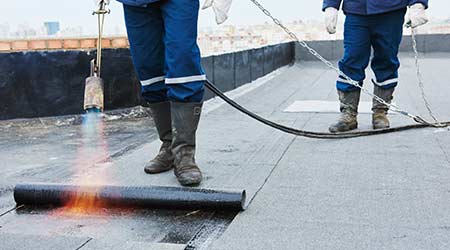« Back to Facilities Management Roofing Category Home
Roof Warranties Put Focus on Systems, Not Just Products
July 22, 2019
- Roofing
By Karen Warseck
Over time, the focus of the roofing industry has gradually shifted from specific roofing products to overall roofing systems. One important factor in this shift was the change from bonds to warranties.
Bonds were issued by insurance companies through the membrane manufacturer so there were no parameters for the bond other than the membrane manufacturer’s membrane being required.
When the roofing industry stopped issuing bonds, the manufacturers replaced them with warranties — legal contracts rather than insurance policies — and the manufacturers realized they needed to control what was being installed with their membranes. Early on, one could still pick and choose among several options, but as time went on, the membrane manufacturers began to also produce or license other parts of the roof system.
According to Dario Miranda, senior commercial specialist, GAF Building Materials Corp., it was a case of incompatible materials being used in the system and the subsequent failures that occurred. By stating which materials could be used in a warranted system, the manufacturers could be more assured that the materials used in the roof were compatible and up to the manufacturer’s standards.
“The expectation of performance has evolved,” says Jerry Beall, FiberTite product and technical specialist. “The last [person] on top ends up being responsible.” There has been a transfer of liability to manufacturers and they have responded by controlling the components within the system. “Form, fit, and function apply to a system,” Beall continues. “You have a screw, you have an insulation, you have a membrane. All have to have certain attributes.” He also notes that manufacturers must respond to changing conditions. “Cover boards initially were installed for resistance to foot traffic,” he says. “Now they can enhance the distribution of energy from hail so the membrane doesn’t rupture. Vapor issues change as structure and activities change.”
Karen L. Warseck, AIA, LEED AP, is a registered architect and president of Building Diagnostics Associates, a Hollywood, Fla., architecture firm that specializes in investigating the causes of cracks and leaks in roofs and walls of existing buildings and designing remedial construction to fix them. She is a contributing editor for Building Operating Management.








